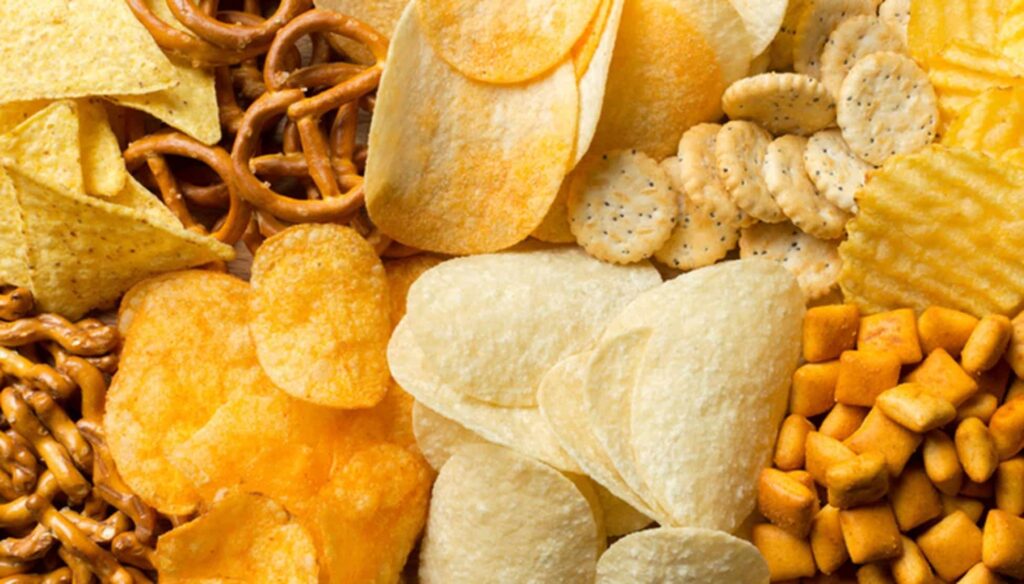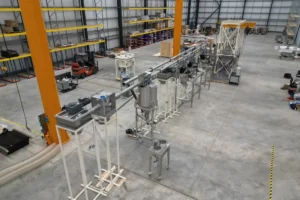In a world where our culinary desires meet the demands of our fast-paced lifestyles, snack foods have emerged as the unsung heroes of our day-to-day lives. Journey with us through the dynamic world of snacking as we unpack its rich history and delve into today’s innovative trends, from the first savory bite of a perfectly crisped chip to the sweet surrender of chocolate melting on our tongues.
This article offers a comprehensive review of the most popular snack foods throughout history and the evolution of the snack food industry. It will also provide insight into the growing trends that have recently appeared in snack food production.
What Are Snack Foods?
Snack foods are more than just quick bites we grab between meals. They are an artful blend of flavors and textures, a testament to culinary creativity in pocket-sized portions. From exotic, spicy trail mixes that take our taste buds on a global adventure to timeless classics like crispy potato chips or indulgent chocolate truffles, snack foods cater to every whim and craving.
They bridge the gaps between our main meals, provide comfort during movie nights, and fuel our adventures on the go. Snack foods are the delightful interludes to our daily symphony of meals, adding flavor, fun, and spontaneity to our eating routines.
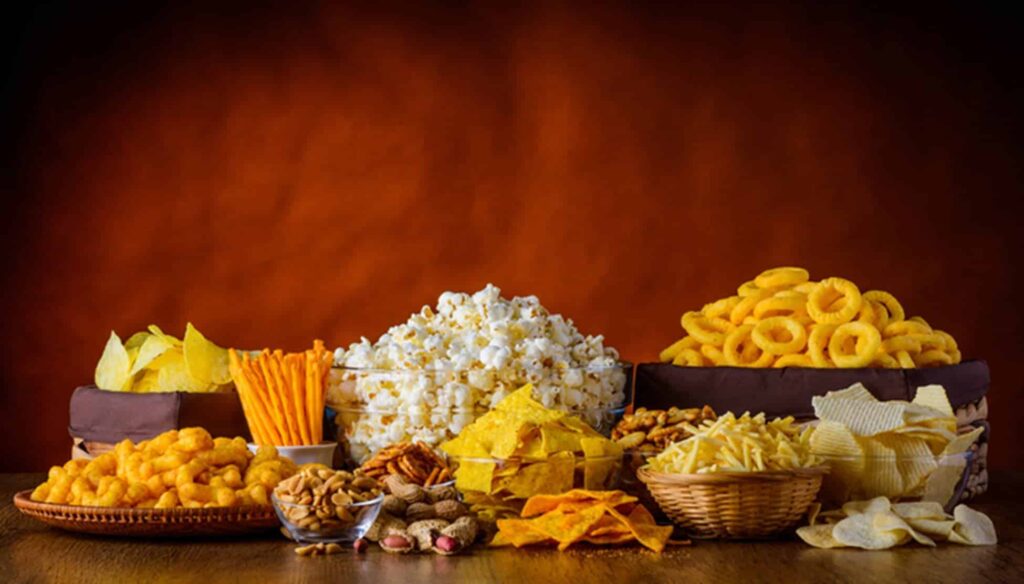
A Historical and Trendy Overview
When it comes to snacking, what typically springs to mind are bite-sized foods consumed between main meals. From the ancient practice of munching on fresh fruit and nuts to the modern-day obsession with sugary, salty, and fatty delights, the snacking journey is an intriguing one.
The Transformation of Snacking Habits
Historically, individuals relied on natural items like fruits or nuts to bridge the hunger gap between meals. However, the 19th century marked a notable shift in American snacking trends from these natural bites to commercially processed treats. Central to the allure of these treats are the “big three” ingredients: sugar, salt, and fat.
- Salt amplifies taste,
- Fat delivers a calorie-rich energy boost,
- Sugar triggers feelings of happiness and fulfillment.
This trio resulted in snacks becoming an integral part of the daily routine for many. A revealing statistic is that snacking frequency has doubled in the past four decades. By 2007, only 10% of participants reported not indulging in daily snacks, contrasting sharply with 40% in 1978.
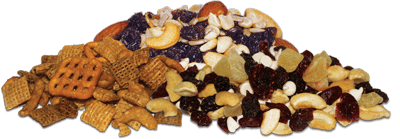
Why is Snacking a Multi-Billion Dollar Industry?
In today’s fast-paced world, snacking is more than just a treat – it’s a lifestyle. The constant hustle-bustle means many prefer quick snack breaks over elaborate meals. As a dietitian aptly noted, “Our society thrives on a 24/7 food culture.” Whether it’s mid-meeting munchies, a quick bite while commuting, or satiating hunger pangs during shopping, snacks have found their way everywhere.
Recent global surveys highlight an interesting trend:
- 52% of global respondents (and 49% of Americans) often opt for snacks over a traditional breakfast.
- Around 43% globally, and 52% of Americans, swap out lunch for quick snack foods.
- 40% of Americans now prefer snacks for dinner, a percentage that fluctuates from 20% in parts of Europe to over 60% in some Asian regions.
- Given such figures, it’s hardly a surprise that the snack industry is booming. Europeans lead the pack, spending a staggering $170 billion on snacks annually. Close behind are Americans, with an annual expenditure of $120 billion on snack foods.
The commercial success of the snack industry hinges on three pillars:
- Taste – Before snacks hit the shelves, they undergo rigorous research and testing to perfect their flavor, texture, and appearance.
- Convenience – Ready-to-eat and easy-to-carry snacks fit seamlessly into our busy lives.
- Cost-Effective Production – Using basic ingredients like flour, sugar, salt, and fat, the industry maximizes profits while producing popular snacks. This affordability and the use of a specialized belt conveyor system also enable companies to innovate and refine their production processes further.
Understanding Modern-Day Snacking
While traditionally, a “snack” might imply something small and quick, modern snacking encompasses a vast array of foods, be it salty chips whizzing by on a conveyor belt for warehouse distribution or decadent chocolate bars awaiting their turn. From serving functional purposes like nutrition to purely pleasure-driven indulgence, snacking in the US has redefined traditional meal norms. Enter the age of the “mini-meal consumer,” where predefined snack categories no longer apply.
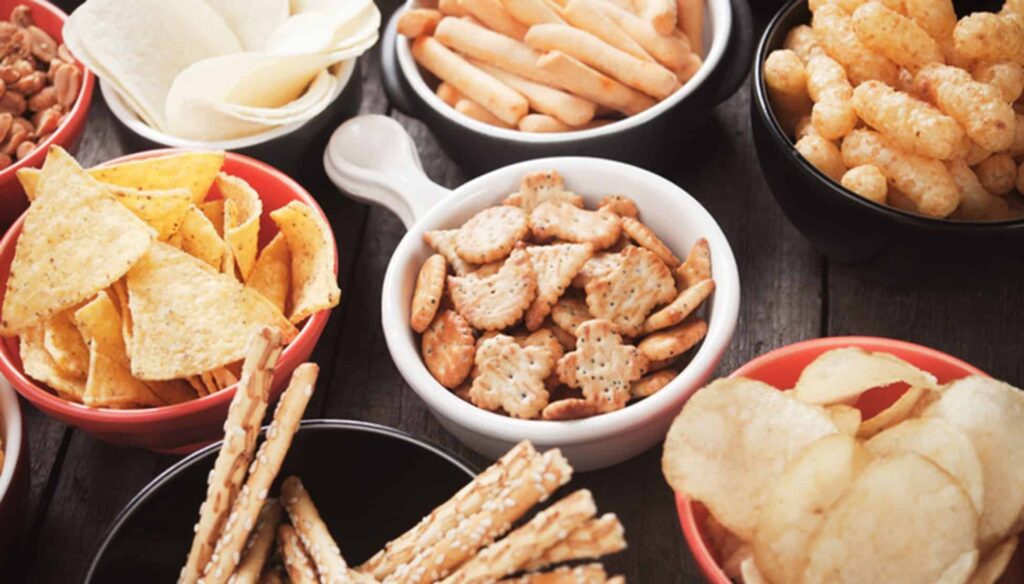
The Salty Sensations: America’s Love for Savory Snacks
Across the bustling streets and quiet corners of America, there’s an undeniable craving for the salty crunch of savory snacks. From the iconic pretzel twists to the humble potato chip, these tantalizing treats have woven themselves into the very fabric of American culture.
Let’s take a quick look at the development and evolution of the snack food industry in the United States, presenting the most popular snacks on the American market.
Peanuts and Popcorn
The first commercial snack foods in America were peanuts and popcorn. Cheap, tasty, and portable portions were sold in the streets, at fairs, and at sports events. The first to turn selling peanuts into a business was Amedeo Obici, an Italian-born immigrant from Pennsylvania, who established the Planters’ Peanut Company in 1906. Together with his partner, Amedeo continuously worked on product and packaging improvements, introducing Mr. Peanut as the company’s logo in 1917.
Pretzels
When it comes to pretzels, one of America’s favorite snacks, commercial production started by the end of the 19th century. The introduction of the conveyor belt for food processing in the early 20th century played a significant role in their mass production. However, pretzels truly hit their stride and became widely popular only after this process became fully automated in the 1930s.
Potato Chips
The next snack idea, potato chips, appeared on the American market in the 19th century. They were sold in barrels that couldn’t keep them fresh for a long time. Everything changed with the groundbreaking invention of airtight bags in 1920 that kept chips fresh and crispy, causing the skyrocketing popularity of this salty snack that is still the first snack choice for most Americans.
Corn Chips
Corn chips, originally from Mexico, are cut up, fried, or dried up corn flour tortillas. Elmer Doolin first bought a bag of “friotes” for a nickel, and since he liked the tasty chip, he then bought the recipe for just $100. He renamed this snack Fritos and started commercial production in 1932.
Soon after, he found a partner willing to distribute Fritos nationwide, and the two companies merged into the Frito-Lay snack food company. The rest is history. Frito-Lay swiftly conquered the snack food market by introducing a wide range of different-flavored snacks.
Chips, corn chips, and pretzels represent the most profitable category of the snack food industry, with $4 billion and an 8% growth marked between 2016 and 2018. However, Americans indulge in various salty snacks, like pizza bites, string cheese, and beef jerky meat snacks, which scored a 26% increase in sales within the same period.
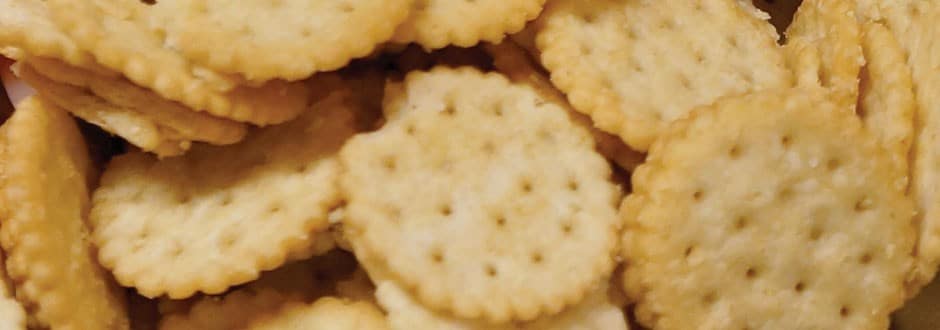
The Sweet Delights: America’s Sugar Rush
The wide range of sweet snack foods can be divided into five essential categories: hard candy, chocolate candy, chocolate chips, baked goods, and frozen sweets. This being said, let’s take a look at each category:
Hard Candy
This type of sweet snack was produced in Asia thousands of years ago. However, hard candy production in Europe started in the late 18th century. Since then, an array of different hard candies has appeared on the snack food market. The first commercially produced hard candies in the USA were saltwater taffy made in Atlantic City, and Life Savers produced in Cleveland.
Chocolate Candy
It all started when Joseph Storrs Fry invented the process of mixing cocoa powder, sugar, and cocoa butter into a thin paste that could be molded. This revolutionary invention led to the commercial production of chocolate-based snacks. Nowadays, chocolate candies are the second-most profitable category in the snack food industry, with a $2.5 million gain. Swiss and Belgian chocolate brands with traditions that date back to the 19th century are still leading this flourishing market.
Chocolate candies and caramels became increasingly popular in the United States around 1870, although they were handmade and expensive. The early producers of chocolate confections appeared in Boston, and the first chocolate retail stores opened in the 1920s.
However, in 1903, Milton Hershey revolutionized the entire market by inventing the next snack idea – the iconic Hershey chocolate and peanut butter bar, which was the first in the vast array of sweet snacks that came off the Hershey assembly line. Nowadays, the chocolate bars market is booming with famous brands, such as Snickers, Mars, and Milky Way, which are still the favorites among the American population.
Chocolate Chips
The history of chocolate chips is closely intertwined with the evolution of the chocolate industry itself. Chocolate chips were invented in the 1930s by Ruth Graves Wakefield. Ruth and her husband, Kenneth Wakefield, owned the Toll House Inn in Whitman, Massachusetts. In 1937, Ruth decided to make a batch of chocolate cookies for her guests, but she ran out of the baker’s chocolate she typically used. Instead, she chopped up a semi-sweet chocolate bar from Nestlé, expecting it to melt and create chocolate cookies.
To her surprise, the chocolate bits retained their shape, giving birth to the concept of chocolate chips. This accidental innovation led to the famous Toll House Cookie recipe, published in a Boston newspaper and later gaining nationwide popularity.
As a result, Ruth Wakefield and Nestlé struck a deal that allowed the company to print the Toll House Cookie recipe on the back of their chocolate bars, and they began producing chocolate chips, now known as “Nestlé Toll House” chocolate chips. This pivotal moment not only transformed the way cookies were made but also laid the foundation for the widespread use of chocolate chips in various culinary creations, contributing to their iconic status in the world of baking and confectionery.
Baked Goods
This category of sweet snacks includes a wide range of bagels, buns, rolls, and puff pastries, but we will focus on the ultimate baked snack – the cookie. Cookie, an American term that originated from the Dutch language, initially referred to sugar cookies flavored with spices. Later on, this term extended to other baked snacks, like wafers, snaps, and macaroons.
At first, they were homemade and sold in grocery stores until the first commercially produced cookies appeared at the end of the 19th century. Nowadays, Oreos are the world’s best-selling sandwich cookies, reaching $2 billion in annual profit, with more than 40 billion cookies produced worldwide every year.
Frozen Sweets
The first ice cream parlors appeared in Italy and France during the 18th century. However, the three most recognizable products, like ice cream cones, ice cream bars, and popsicles, originated in America. Ice cream cones, which enabled people to eat ice cream on the go, became widely popular at the St. Louis World Fair. One of the most popular products in this category is the Eskimo Pie, which came into the market in the 20s, approximately at the same time when the first chocolate-covered ice cream bar was made in Youngstown, Ohio.
From humble beginnings to billion-dollar industries, snacks have become an integral part of American culture. As we witness even more innovations and flavors, the snack industry promises exciting times ahead.
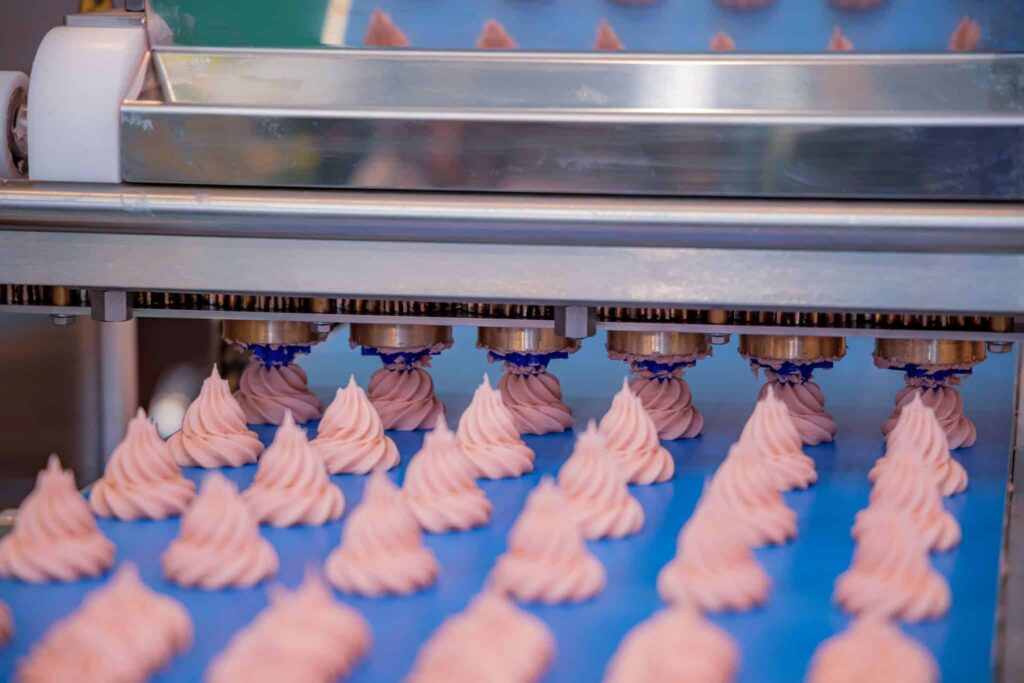
Health Is Everyone’s Concern Nowadays, So the Food Quality Is Improving Too
Since the healthy snack segment is on the increase, snack manufacturers are also focused on developing healthy and sustainable products. Their main goal is to diminish or replace salt, saturated fat, and sugar with other options while keeping the appealing taste.
The search for healthy snack products has led to inventive snack combinations, like chocolate quinoa bars, kombucha granola, or ice creams blended with vegetables. Packaged food manufacturers and healthy recipe developers introduced various herbs, like lavender, rose, or chamomile, to add flavor to snacks instead of sugar and salt.
Low-carb snack alternatives, like crackers, snack mixes, and wraps made with cauliflower, coconut, legumes, vegetables, nuts, and seeds, are growingly popular healthy office snacks that will soon become mainstream products.
Ensuring sustainability through advanced processing and packaging solutions is another leading trend in the snack industry. Adopting innovative processing techniques, like bulk material handling equipment, may contribute significantly to adjusting the nutritional values of savory snacks. Applying efficient and cost-effective systems in different production stages, from pre-processing, frying, and seasoning to packaging, will lead to the production of healthy snacks.
In the Food Industry, Vacuum Frying Technology Has Been Recognized as an Alternative to Traditional Frying Methods
As the name indicates, vacuum frying technology is a method of frying where the snack is deep-fried in oil in a near-vacuum or vacuum condition. Vacuum frying occurs under low pressure, allowing the fruit or vegetable to cook in oil at a low temperature.
The fruit or the vegetable is placed in an airtight vessel where the oil is heated. Using a pump to generate a near-vacuum condition, the vessel is then depressurized. The snack is then deep-fried for a specified amount of time, and when the frying process is complete, the vessel is quickly re-pressurized. With the vacuum frying method, less oil is required to remove the moisture content from the fruit or vegetable, and every piece is more evenly fried.
Vacuum-fried snack foods have a plethora of great qualities -the fruit or vegetables absorb less oil and retain their flavor and most of their nutrients, which is why healthy snack food manufacturers usually utilize this method. Vacuum-fried snacks are crispy, very tasty, require no additives, and ready for the industrial conveyor belt.
Flexible Packaging Systems Allow for Greater Portability to Fit With Modern Consumer’s On-The-Go Lifestyle
The snack’s packaging is also a factor that determines whether consumers will or will not buy the product, meaning that flexible packaging also plays a vital part in the consumers’ decision-making. It all depends on a variety of factors, such as functionality, design, and size.
One of the most popular snack packaging formats is PET jars. These jars are grip-friendly and wide-mouth, and we see them, especially in wholesale sizes of products. PET jars are containers that have wide-mouth closures, which allow consumers to easily scoop or take out the product. These vessels are a great option for families who buy their snacks in bulk and portion out the snacks.
Regarding portable snack packaging, the trend has moved from larger, communal bags to individual-sized portions. This shift requires cutting-edge packaging solutions that offer adaptability in size, quick processing, and minimal error rates. By adopting such forward-thinking systems, snack manufacturers can introduce more compact packaging and align with WHO recommendations.

Explore Efficiency With Tubular Cable Drag Conveying Systems
To accommodate smaller packaging, modifications to other processing equipment become essential, ensuring efficient handling of the output. Hence, snack manufacturers must invest in premium, adaptable conveyor belt system solutions like the one Cablevey Conveyors provide. These systems guarantee the delicate and hygienic transfer of products through diverse manufacturing phases.
Cablevey Conveyors feature a spectrum of conveyor capacities tailored for careful material transport within a sealed, debris-free setting. Their 2-inch diameter conveyors are ideal for transporting fragile materials like cookie remnants, seeds, or milled coffee, while the more robust 8-inch diameter conveyors adeptly handle items like whole walnuts, peanuts, or airy rice cereals.
Why It’s Important to Use Top-Notch Equipment?
Utilizing contemporary processing and packaging tools, including a custom conveyor belt and system like Cablevey Conveyors, ensures a commitment to cleanliness, speed, and energy efficiency, driving sustainable practices. Cablevey Conveyors, in particular, excel in reducing waste and safeguarding products from potential harm.
This advanced tubular cable mechanism ensures the gentle transfer of items, such as crackers, chips, or processed goods, throughout different production phases, ensuring they remain intact. It extends to both wrapped and unwrapped candies, guaranteeing their flawless transition from the production line to packaging.

Stay Ahead of Customer Demand by Understanding the Intricacies and Innovations
As we delve deeper into the world of snacking, it becomes evident that producing these treats with precision and efficiency is equally important. Contact Cablevey Conveyors and learn all about the tubular cable system – a revolutionary tool that ensures snack production is not only fast but also maintains the integrity and quality of the product. As our snack cravings continue to grow, so does the need for superior production mechanisms like the tubular cable system.

